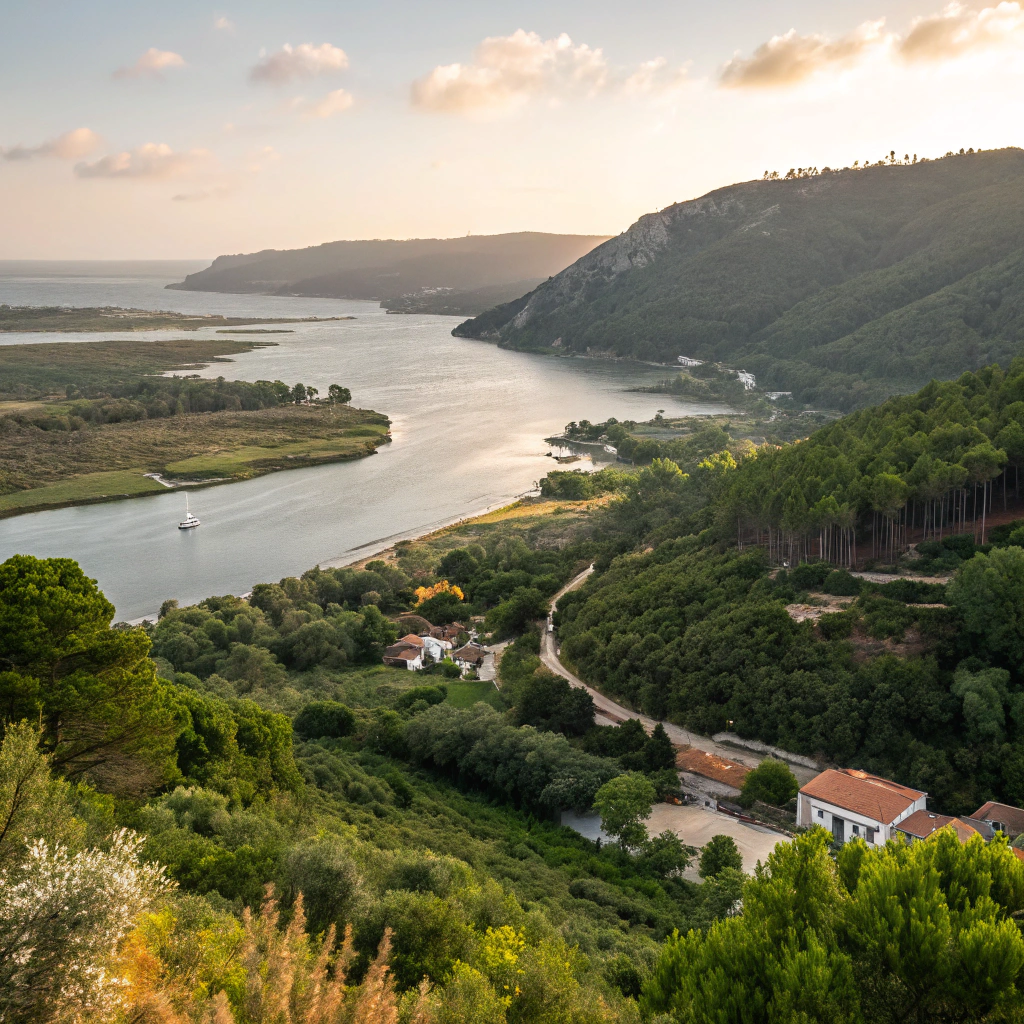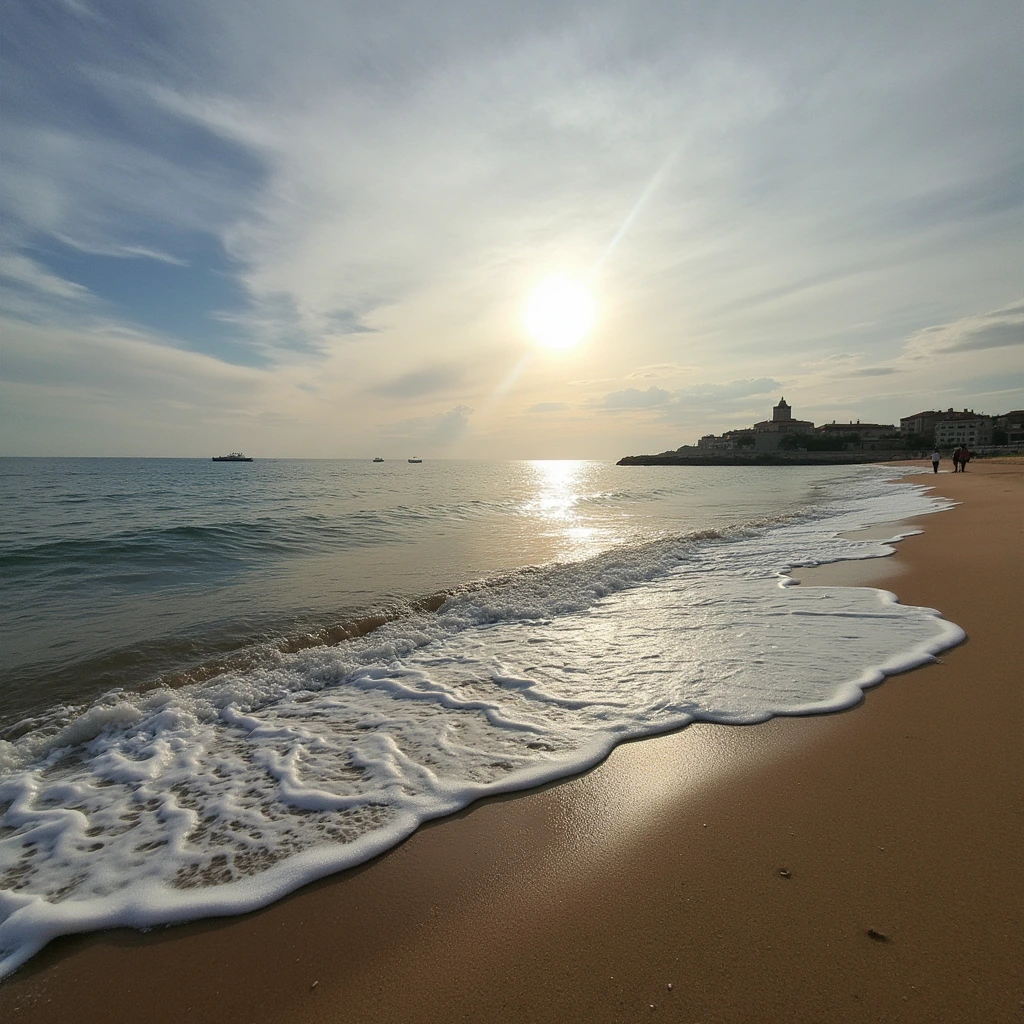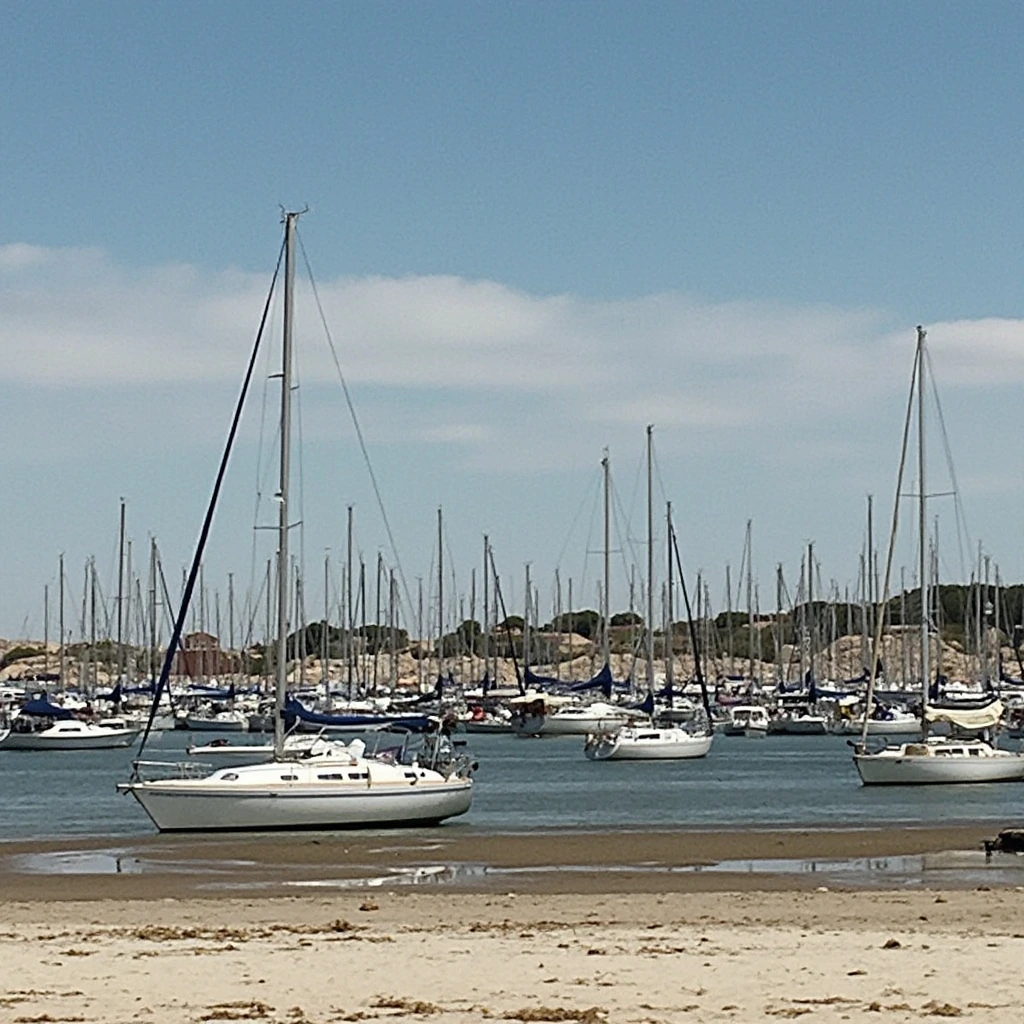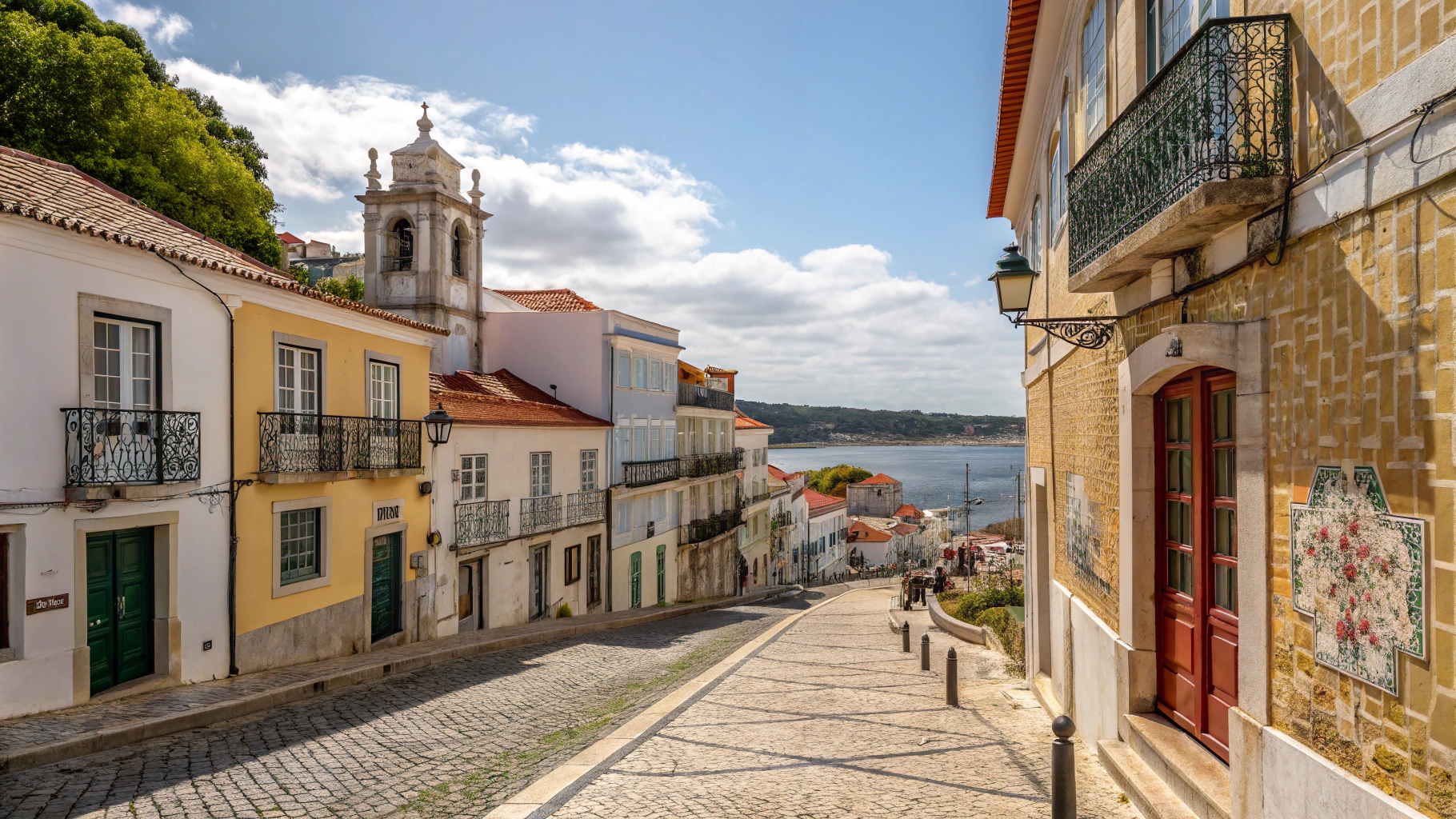Table of Contents
Setubal’s Coastal Charm
Nestled along Portugal’s stunning Sado Estuary, Setubal remains one of the country’s most underappreciated treasures. Just 40 kilometers south of Lisbon, this vibrant fishing port combines authentic Portuguese culture, breathtaking natural landscapes, and gastronomic delights without the tourist crowds found in more famous destinations. As you plan your Portuguese adventure, Setubal offers a refreshing alternative to the well-trodden paths of Lisbon, Porto, and the Algarve.
Setubal’s unique position between the Serra da Arrábida mountains and the Atlantic Ocean creates a microclimate that benefits both its renowned wine production and its spectacular beaches. While many travelers rush past on their way to southern Portugal, those who pause to explore Setubal discover a region rich in history, natural beauty, and culinary excellence.
This comprehensive guide will take you beyond the obvious tourist spots to reveal the top 5 hidden gems in Setubal that even many Portuguese visitors overlook. From secluded beaches accessible only by boat to family-run seafood restaurants serving the day’s catch, we’ll help you experience Setubal like a local.
The Rich History and Culture of Setubal
From Roman Settlement to Modern Port City
Setubal’s story begins over 2,000 years ago when Romans established a settlement called Cetobriga, valuing the area for its salt production and strategic harbor. Throughout the centuries, Setubal evolved from a modest fishing village into a significant port, particularly during Portugal’s Age of Discoveries in the 15th and 16th centuries.
The city’s maritime heritage remains evident today, with fishing still forming an important part of Setubal’s economy and cultural identity. Walking through the old town reveals layers of history, from medieval walls to Renaissance churches and elegant 18th-century townhouses built during the city’s commercial heyday.
Setubal’s Cultural Landmarks Worth Visiting
The Monastery of Jesus (Convento de Jesus) stands as Setubal’s most important historical monument. Built between 1490 and 1500, this structure represents the earliest example of Manueline architecture in Portugal—a distinctive Portuguese late Gothic style featuring maritime motifs. The monastery’s church houses an impressive collection of 16th-century azulejo tiles and religious art.
Another cultural highlight is the Fortress of São Filipe, perched on a hill overlooking the city and bay. Built in the late 16th century to defend Setubal from Spanish and pirate attacks, it now offers visitors spectacular panoramic views and houses a luxury pousada (historic hotel).
Don’t miss the Municipal Market, where Setubal’s connection to the sea becomes deliciously apparent. The market’s fish section displays an impressive variety of seafood caught daily in local waters, providing insight into both the region’s cuisine and its continuing fishing traditions.

Serra da Arrábida’s Secret Beaches
Discovering Portugal’s Most Pristine Coastline
The Serra da Arrábida Natural Park creates a stunning backdrop for Setubal, with its limestone mountains plunging dramatically into turquoise waters. While beaches like Portinho da Arrábida have gained some recognition, several hidden coastal gems remain relatively unknown to international visitors.
Praia dos Galapinhos, named Europe’s most beautiful beach by European Best Destinations in 2017, somehow maintains its secluded atmosphere despite this honor. The combination of crystal-clear water, fine white sand, and the verdant mountain backdrop creates a Mediterranean-like paradise that feels worlds away from Portugal’s more developed beach areas.
Accessible primarily by a challenging hiking trail or by parking at nearby Praia dos Galapos and walking along the shoreline during low tide, this beach rewards visitors with natural beauty and relative solitude, especially outside July and August.
How to Access Setubal’s Most Secluded Shores
For those seeking even more isolation, Praia do Ribeiro do Cavalo presents Setubal’s ultimate hidden beach experience. Not appearing on many tourist maps and unmarked by road signs, this small cove with emerald waters requires determination to reach—either by boat or via a steep 20-minute hike down an unmarked trail.
The effort proves worthwhile when you emerge onto a pristine beach framed by dramatic cliffs. Bring everything you need for the day, as there are no facilities whatsoever. This lack of development preserves the beach’s untouched quality, making it feel like your personal discovery in Setubal’s coastal landscape.
For families or those preferring easier access, Praia da Figueirinha offers a more accessible yet still beautiful alternative. As the first major beach you’ll encounter when driving from Setubal to Arrábida, it features gentle slopes into the ocean and basic amenities while maintaining the stunning natural setting characteristic of the Arrábida coastline.
Gastronomic Treasures
Beyond Choco Frito: Local Delicacies You Must Try
While Setubal’s famous choco frito (fried cuttlefish) appears on most tourist menus, the city’s culinary landscape extends far beyond this signature dish. The region’s unique geography—where river meets ocean—creates a distinctive gastronomy that combines fresh seafood with products from the neighboring Alentejo region.
Torta de Azeitão represents one of Setubal’s most delicious yet under-celebrated treats. This cylindrical sweet pastry features a thin, delicate sponge cake wrapped around a rich egg yolk cream infused with cinnamon. Family bakeries in the small town of Azeitão have preserved traditional methods of making this specialty for generations.
Seafood enthusiasts should seek out arroz de lingueirão (razor clam rice), a flavorful rice dish cooked with these distinctive shellfish harvested from the Sado Estuary. While many restaurants offer excellent versions, locals prefer establishments like Restaurante O Novo 10 or Tasca da Anita, where recipes have remained unchanged for decades.
Best Places to Eat in Setubal Like a Local
To experience authentic Setubal dining, venture beyond the main tourist areas to neighborhoods where locals gather. The fishing district of Troino houses several unassuming restaurants where the day’s catch arrives directly from family fishing boats.
Tasca da Anita, a tiny family-run establishment with just a few tables, offers no written menu—simply the freshest seafood prepared according to daily availability. The restaurant’s communal seating encourages conversation with locals, who often share stories about the city’s maritime traditions.
For a moderately upscale yet authentic experience, O Laranjinha combines traditional Setubal recipes with contemporary presentations. Their seafood cataplana (a Portuguese seafood stew cooked in a distinctive copper pan) incorporates local mussels, clams, and white fish in a saffron-infused broth that captures the essence of the region’s flavors.
The Sado Estuary’s Wildlife Sanctuary
Encountering Bottlenose Dolphins in Their Natural Habitat
One of Setubal’s most extraordinary yet underappreciated attractions is the resident population of bottlenose dolphins in the Sado Estuary. Unlike many dolphin-watching destinations worldwide, Setubal offers the rare opportunity to observe these intelligent marine mammals in their natural environment without traveling far offshore.
The Sado Estuary dolphin community includes around 30 individuals that have adapted to the unique ecological conditions where the river meets the Atlantic. Marine biologists consider this population particularly significant because of their unusual residence patterns in the estuary rather than open ocean.
Several local companies offer responsible dolphin-watching excursions that follow strict guidelines to minimize disturbance to the animals. Vertente Natural and Sétubal Dolphin Watch stand out for their commitment to conservation and educational approach, with marine biologists providing insights about dolphin behavior and the estuary’s ecosystem during tours.
Birdwatching Paradise: The Diverse Avian Life of Setubal
Beyond dolphins, the Sado Estuary Natural Reserve hosts extraordinary birdlife, making it a paradise for birdwatching enthusiasts. The reserve’s diverse habitats—including salt marshes, rice fields, and mudflats—attract over 250 bird species throughout the year.
Winter brings spectacular flocks of flamingos that paint the estuary in shades of pink. These elegant birds, along with herons, egrets, and numerous migratory species, create a dynamic ecosystem that changes with the seasons. The Mourisca Tide Mill provides an excellent observation point, with pathways and hides strategically positioned for wildlife viewing.
For serious birders, the lesser-known Comporta area at the southern edge of the estuary offers quieter observation opportunities. Here, you might spot rare visitors like the purple swamphen or black-winged stilt without encountering other tourists. Consider visiting during spring or fall migrations for the most diverse birdwatching experience in Setubal.
Azeitão’s Wine and Cheese Traditions
Discovering Portugal’s Oldest Wine Region
While the Douro Valley and Alentejo receive most attention from wine tourists, Setubal’s Azeitão area harbors one of Portugal’s oldest and most distinctive wine traditions. The region received its first Denominação de Origem Controlada (DOC) designation in 1907, recognizing centuries of winemaking expertise.
The star of Setubal’s wine production is unquestionably Moscatel de Setúbal, a fortified sweet wine made primarily from Muscat of Alexandria grapes. Unlike many dessert wines, Moscatel de Setúbal combines sweetness with refreshing acidity and complex aromatic profiles that include orange blossom, caramel, and dried fruits.
José Maria da Fonseca, established in 1834, offers the region’s most comprehensive wine tourism experience with guided tours of their historic cellars and tastings of various Moscatel vintages. For a more intimate experience, the family-run Quinta de Alcube welcomes visitors by appointment, providing personalized tours that connect wine production to the region’s cultural landscape.
Artisanal Cheese Production in the Arrábida Mountains
Complementing Setubal’s wine tradition is the production of Azeitão cheese, a soft sheep’s milk cheese protected by PDO (Protected Designation of Origin) status. Made from the milk of Churra da Terra Quente sheep grazing on Arrábida’s herb-covered slopes, this cheese develops distinctive flavors influenced by the region’s unique microclimate.
Traditional production involves curdling raw sheep’s milk with cardoon thistle rather than animal rennet, resulting in a creamy, slightly runny cheese with subtle herbal notes. The small village of Azeitão houses several artisanal producers who welcome visitors for demonstrations and tastings.
Fernando & Simões represents one of the few remaining producers maintaining entirely traditional methods. Their small facility offers an intimate glimpse into the cheese-making process, including aging in climate-controlled rooms where each wheel develops its characteristic buttery texture and complex flavor profile.
When visiting Setubal’s wine and cheese producers, timing your trip for spring provides the additional pleasure of seeing Arrábida’s slopes covered in wildflowers, adding visual splendor to the gastronomic experience.
Troia Peninsula’s Archaeological Wonders
Exploring Roman Ruins by the Ocean
Just across the Sado Estuary from Setubal lies the Troia Peninsula, accessible by a short ferry ride. While many visitors come for Troia’s modern resort and pristine beaches, few explore its remarkable archaeological site containing the ruins of Cetobriga, a significant Roman industrial complex dedicated to fish processing.
Dating from the 1st to 6th centuries AD, these exceptionally well-preserved ruins include dozens of tanks once used to produce garum—a fermented fish sauce that served as the ketchup of the ancient world, exported throughout the Roman Empire. The site’s location directly on the shoreline creates a dramatic setting where ancient history meets natural beauty.
Guided tours available Wednesday through Sunday provide fascinating insights into ancient industrial production methods and daily life in Roman Lusitania. The small on-site museum displays artifacts recovered during excavations, including fishing implements, ceramics, and household items that humanize the archaeological remains.
Secret Beaches and Nature Trails of Troia
Beyond its archaeological significance, Troia offers some of the region’s most spectacular beaches without the steep access challenges found in Arrábida. The peninsula’s Atlantic side features a nearly uninterrupted 17-kilometer stretch of pristine sand, with development concentrated primarily around the ferry terminal area.
For true seclusion, head south toward Comporta, where the landscape transitions to pine forests and sand dunes. Beaches like Praia do Pego and Praia da Comporta offer kilometers of golden sand with minimal development—just a few tasteful beach restaurants serving fresh seafood and local wines.
Nature enthusiasts should explore the peninsula’s interior, where a network of walking trails winds through preserved pine forests and dunes. The Caldeira de Troia trail loop circles a coastal lagoon, offering excellent birdwatching opportunities and views of Setubal across the estuary waters.

Essential Practical Tips for Visiting Setubal
Best Times to Visit and Getting Around
Setubal rewards visitors year-round, with each season offering distinct advantages. May through June and September through October provide ideal conditions—warm temperatures perfect for beach activities without summer crowds, plus lower accommodation prices.
July and August bring the liveliest atmosphere with local festivals and guaranteed beach weather, but expect more tourists and higher prices, especially in Arrábida and Troia. Winter visits (November-March) offer uncrowded experiences of Setubal’s cultural attractions and wildlife, though some seasonal businesses close and swimming becomes impractical.
While having a car provides maximum flexibility for exploring Setubal’s diverse attractions, public transportation options exist. Fertagus trains connect Lisbon to Setubal in approximately one hour. Within Setubal, local buses serve major attractions, though service to Arrábida beaches becomes limited outside summer months. The Troia ferry operates year-round with more frequent departures during tourist season.
Accommodation Recommendations for Different Budgets
Setubal offers lodging options ranging from luxury to budget-friendly, with many providing better value than equivalent properties in Lisbon or the Algarve.
For luxury travelers, Pousada Castelo de Palmela occupies a restored 17th-century fortress overlooking the entire region, offering spectacular views and four-star amenities. In Troia, the design-focused Troia Design Hotel provides contemporary luxury with seafront positioning and excellent dining options.
Mid-range travelers find excellent value at smaller boutique properties like Rio Art Hotel in Setubal’s historic center, featuring individually designed rooms in a renovated townhouse. For apartment-style accommodations, Casa do Largo offers stylish self-catering units in a traditional building near the main square.
Budget-conscious visitors can consider well-reviewed guesthouses like Hospedaria Portuguesa or the centrally located Sado Hostel, which offers both private rooms and dormitory-style accommodations with shared facilities. For longer stays, numerous vacation rentals in residential neighborhoods provide authentic local experiences at reasonable rates.

Day Trips from Setubal Worth Your Time
Beyond City Limits: Exploring Setubal’s Surrounding Region
Setubal’s strategic location makes it an excellent base for exploring diverse attractions in central Portugal. The medieval walled town of Palmela, just 15 kilometers north, crowns a hill with its impressive castle offering panoramic views extending to Lisbon on clear days. The fortress houses a luxury pousada, but visitors can explore its towers and ramparts even without staying overnight.
Nature lovers should consider a day trip to Sesimbra, a picturesque fishing town nestled between dramatic cliffs just west of Setubal. Beyond its excellent seafood restaurants and pleasant beach, Sesimbra provides access to the Cabo Espichel nature reserve, where walking trails lead to stunning ocean viewpoints and dinosaur footprints preserved in ancient limestone.
For wine enthusiasts, the Alentejo wine region begins just east of Setubal. The historic town of Évora, a UNESCO World Heritage site approximately 100 kilometers away, combines Roman ruins, medieval architecture, and excellent wineries in the surrounding countryside. Many vineyards offer tours and tastings, providing insight into Portugal’s rising prominence in the international wine scene.
Lisbon vs. Setubal: Why Combine Both in Your Itinerary
Rather than choosing between Lisbon and Setubal, savvy travelers increasingly combine both destinations to experience different facets of Portuguese culture. Using Setubal as a relaxing counterpoint to Lisbon’s urban energy creates a balanced itinerary that showcases both Portugal’s metropolitan and provincial characters.
A recommended approach involves beginning with Lisbon’s iconic attractions—historic neighborhoods like Alfama and Baixa, landmarks such as São Jorge Castle and Belém Tower—before transitioning to Setubal for a more authentic, less touristic experience. This progression allows visitors to appreciate Portugal’s famous sites while subsequently discovering the country’s everyday rhythms and natural beauty.
The contrast becomes particularly valuable for longer stays in Portugal. After navigating Lisbon’s bustling streets and tourist crowds, Setubal offers respite with its relaxed pace, easier navigation, lower prices, and immediate access to pristine natural environments. The two cities, though just an hour apart, present distinctly different Portuguese experiences that complement rather than duplicate each other.
FAQ
Is Setubal Worth Visiting?
Setubal absolutely deserves a place on your Portugal itinerary, especially for travelers seeking authentic Portuguese experiences beyond standard tourist routes. The city offers an ideal combination of elements that define Portugal’s appeal—magnificent beaches, excellent seafood, historic architecture, and natural beauty—without the overtourism affecting destinations like Lisbon and Porto.
What makes Setubal particularly worthwhile is its multifaceted character. Within a compact area, visitors can explore a working fishing port with centuries of maritime history, relax on Mediterranean-quality beaches, observe dolphins in their natural habitat, hike through pristine nature reserves, and sample distinctive local wines and cheeses. This diversity of experiences appeals to various travel styles and interests, from outdoor enthusiasts to culinary travelers.
Additionally, Setubal’s value proposition makes it increasingly attractive as other Portuguese destinations experience rising prices. Accommodations, dining, and activities generally cost 20-30% less than equivalent options in Lisbon or the Algarve, allowing visitors to enjoy higher quality experiences within the same budget.
How Many Days Should I Spend in Setubal?
While Setubal can be visited as a day trip from Lisbon, this approach only scratches the surface of the region’s offerings. A minimum of two full days allows visitors to explore the city center and experience one aspect of its natural surroundings—either Arrábida’s beaches or the Sado Estuary.
For a more comprehensive experience that includes all five hidden gems discussed in this guide, 4-5 days provides an ideal timeframe. This duration allows for a relaxed pace with time to appreciate each area’s distinct character without rushing between attractions. It also builds in flexibility for weather conditions, particularly important if beach activities feature prominently in your plans.
Those interested in using Setubal as a base for exploring the broader region might consider a week-long stay, alternating days in the immediate vicinity with excursions to places like Évora, Sesimbra, or even day trips into Lisbon.
When Is the Best Time to Visit Setubal Beaches?
Setubal’s beach season extends longer than many European destinations due to its protected position and mild climate. Swimming becomes comfortable from late May through early October, with water temperatures reaching their peak (around 20-21°C/68-70°F) in August and September.
For the ideal balance of pleasant conditions and minimal crowds, target the second half of June or the first half of September. During these periods, water temperatures remain agreeable, sunshine is reliable, and you’ll find far more space on even the most popular beaches like Portinho da Arrábida compared to July and August.
It’s worth noting that Arrábida’s beaches have implemented access restrictions during peak season to protect the natural environment. From June 15th to September 15th, visitors must use shuttle services from designated parking areas to reach beaches like Portinho da Arrábida and Galapinhos during daytime hours (typically 8am-7pm). While this adds some logistical considerations, it preserves the beaches’ natural beauty and prevents overcrowding.
How Do I Get from Lisbon to Setubal?
Several convenient options connect Lisbon to Setubal, with travel times ranging from 45 minutes to slightly over an hour depending on the method chosen.
The most straightforward public transportation option is the Fertagus train service from Lisboa-Sete Rios to Setúbal station. Trains run approximately every hour from early morning until late evening, with the journey taking about 55 minutes. Current one-way tickets cost around €4.55, making this both an economical and comfortable option.
Driving provides the most flexibility, particularly if you plan to explore Arrábida or other natural areas surrounding Setubal. From central Lisbon, take the 25 de Abril Bridge and follow the A2 highway south, then connect to the A12 toward Setubal. The drive typically takes 45-50 minutes without traffic, though rush hours can add significant time.
For those without a car, numerous tour operators offer day trips from Lisbon that include transportation and guided experiences in Setubal, Arrábida, and sometimes wine tasting in Azeitão. While less flexible than independent travel, these tours provide convenient introductions to the region’s highlights.
Is Setubal Safe for Tourists?
Setubal ranks among Portugal’s safest destinations for international visitors. The city experiences very low rates of violent crime, and incidents affecting tourists typically limit to occasional petty theft in crowded areas—a concern no different from other European destinations.
The main tourist areas, including the historic center, marina, and major beaches, maintain a visible police presence, particularly during summer months. Even at night, Setubal’s central districts feel secure with good lighting and regular foot traffic until late evening hours.
Natural hazards require more attention than crime concerns when visiting Setubal. Strong currents can affect some Atlantic-facing beaches, particularly on the Troia Peninsula, so always respect warning flags and lifeguard instructions. When hiking in Arrábida, stay on marked trails, as the combination of steep terrain and sometimes slippery limestone can create hazardous conditions for unprepared visitors.
What Makes Setubal’s Cuisine Different from Other Portuguese Regions?
Setubal’s gastronomy stands distinct within Portuguese cooking traditions due to its exceptional access to both river and ocean seafood, combined with proximity to the agricultural traditions of Alentejo. This unique geographic position creates a cuisine characterized by maximizing fresh ingredients with minimal manipulation.
The city’s signature dish, choco frito, exemplifies this approach—fresh cuttlefish lightly coated in cornmeal and quickly fried, typically served with hand-cut potatoes and a simple salad of local produce. While variations exist throughout Portugal, Setubal’s version uses particularly fresh cuttlefish harvested from the Sado Estuary, resulting in exceptional tenderness.
Setubal distinguishes itself through its reverence for shellfish, particularly clams (amêijoas) prepared à Bulhão Pato (with garlic, olive oil, lemon, and cilantro) and Mediterranean mussels from the Arrábida coast. These specialties appear throughout Portugal, but Setubal’s versions benefit from remarkable freshness and specific local varieties developed in the estuary’s unique ecological conditions.
The region’s sweet wines, particularly Moscatel de Setúbal, complete its distinctive culinary identity. Unlike Port or Madeira, Moscatel de Setúbal undergoes a unique production process involving extended maceration with grape skins, creating complex aromatic profiles that pair exceptionally well with local desserts like tortas de Azeitão.
Conclusion: Why Setubal Deserves a Place on Your Portugal Itinerary
As Portugal continues gaining popularity among international travelers, finding authentic experiences becomes increasingly challenging in well-known destinations. Setubal offers a refreshing alternative—a place where traditional Portuguese life continues alongside thoughtful tourism development, allowing visitors to experience the country’s essence without the artifice sometimes created for foreign guests.
The five hidden gems we’ve explored—Arrábida’s secret beaches, local gastronomic treasures, the Sado Estuary wildlife sanctuary, Azeitão’s wine and cheese traditions, and Troia’s archaeological wonders—represent just a sampling of Setubal’s diverse attractions. What unites these experiences is authenticity: each offers a genuine window into Portuguese culture, history, and natural heritage.
Perhaps most compelling is how Setubal rewards curious travelers. Around each corner, down coastal paths, or through the doors of unassuming restaurants, discoveries await those willing to venture beyond guidebook highlights. These moments of discovery—finding a family-run restaurant serving seafood recipes unchanged for generations or stumbling upon a viewpoint where Arrábida’s green mountains meet turquoise waters—create the lasting memories that define meaningful travel experiences.
As you plan your Portuguese adventure, consider allocating time to explore Setubal properly. Whether as a standalone destination or complementing time in Lisbon, this underappreciated region offers the authentic Portugal many travelers seek—a place where genuine hospitality, natural beauty, and cultural heritage combine to create experiences that resonate long after returning home.



